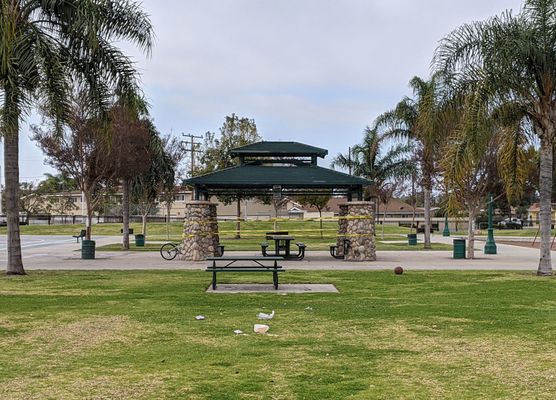
Walnut Grove: A Comprehensive Guide to History, Community, and Modern Living
Walnut Grove, a name that evokes images of idyllic landscapes and historical significance, is more than just a place; it’s a vibrant community with a rich past and a promising future. Whether you’re a prospective resident, a history enthusiast, or simply curious about this charming locale, this comprehensive guide will delve into the heart of Walnut Grove, exploring its origins, its evolution, and what makes it a unique place to live and visit.
The Historical Roots of Walnut Grove
The story of Walnut Grove is deeply intertwined with the history of westward expansion and agricultural development in the United States. Initially inhabited by indigenous populations, the area saw a significant influx of settlers in the 19th century, drawn by the promise of fertile land and new opportunities. The abundance of walnut trees in the region naturally led to the name Walnut Grove. These groves not only provided a valuable resource but also shaped the landscape and identity of the community. Early industries centered around agriculture, with walnut cultivation playing a vital role in the local economy.
Key figures in the early settlement of Walnut Grove included pioneers who established farms, businesses, and community institutions. These individuals laid the foundation for the town’s growth and development. Historical landmarks and preserved buildings serve as reminders of this era, offering a glimpse into the lives of those who shaped Walnut Grove. Understanding this historical context is crucial to appreciating the character of the town today.
Walnut Grove in Popular Culture: The Legacy of Laura Ingalls Wilder
Perhaps the most widely recognized association with Walnut Grove is its connection to the beloved “Little House on the Prairie” series by Laura Ingalls Wilder. While the fictionalized account differs from the actual historical record, the series captured the spirit of pioneer life and brought Walnut Grove into the homes and hearts of millions. The television adaptation further solidified this association, creating a lasting image of Walnut Grove as a symbol of rural American life. [See also: The Real History Behind Little House on the Prairie]
The enduring popularity of the “Little House” books and television show has had a significant impact on Walnut Grove. Tourism related to the series brings visitors from around the world, eager to experience the setting that inspired Laura Ingalls Wilder’s stories. While the real Walnut Grove may differ from the fictionalized version, the connection remains a vital part of the town’s identity and economy.
Modern Walnut Grove: Community and Lifestyle
Today, Walnut Grove is a thriving community that balances its historical roots with modern amenities and opportunities. The town boasts a diverse population, a strong sense of community, and a range of attractions and activities. Residential areas offer a mix of housing options, from historic homes to new developments, catering to a variety of lifestyles and budgets. The local economy is supported by a mix of industries, including agriculture, tourism, and small businesses.
Education is a priority in Walnut Grove, with well-regarded schools serving students of all ages. Community events, festivals, and farmers’ markets bring residents together, fostering a strong sense of belonging. Parks and recreational facilities provide opportunities for outdoor activities and enjoyment of the natural surroundings. The town’s commitment to preserving its heritage while embracing progress makes it an attractive place to live and raise a family.
Real Estate in Walnut Grove
The Walnut Grove real estate market offers a diverse range of options, from charming historic homes to modern developments. Property values vary depending on location, size, and condition, but generally reflect the desirability of the area. [See also: Guide to Buying a Home in Walnut Grove] Potential homebuyers can find everything from cozy bungalows to spacious family homes. Working with a local real estate agent is essential to navigating the market and finding the perfect property to suit individual needs and preferences.
Things to Do and See in Walnut Grove
Walnut Grove offers a variety of attractions and activities for residents and visitors alike. Historical sites, museums, and landmarks provide insights into the town’s past. Outdoor enthusiasts can enjoy hiking, biking, and fishing in the surrounding natural areas. Local shops, restaurants, and cultural venues offer a taste of the town’s unique character. Whether you’re interested in history, nature, or simply relaxing and enjoying the community, Walnut Grove has something to offer everyone.
- Visit the Laura Ingalls Wilder Museum
- Explore the local parks and trails
- Attend a community event or festival
- Dine at a local restaurant
- Shop at the unique boutiques and shops
The Future of Walnut Grove
As Walnut Grove looks to the future, the town faces both opportunities and challenges. Continued growth and development will require careful planning to preserve the town’s character and protect its natural resources. Balancing the needs of a growing population with the desire to maintain a strong sense of community will be crucial. Investing in infrastructure, education, and economic development will be essential to ensuring a prosperous future for Walnut Grove. The town’s ability to adapt and innovate while staying true to its roots will determine its success in the years to come. Walnut Grove will continue to evolve.
In conclusion, Walnut Grove is a place with a rich history, a vibrant community, and a promising future. From its humble beginnings as a pioneer settlement to its modern-day status as a desirable place to live and visit, Walnut Grove has consistently evolved while maintaining its unique character. Whether you’re drawn to its historical significance, its natural beauty, or its strong sense of community, Walnut Grove offers a compelling blend of the past and the present. This makes Walnut Grove a truly special place.
